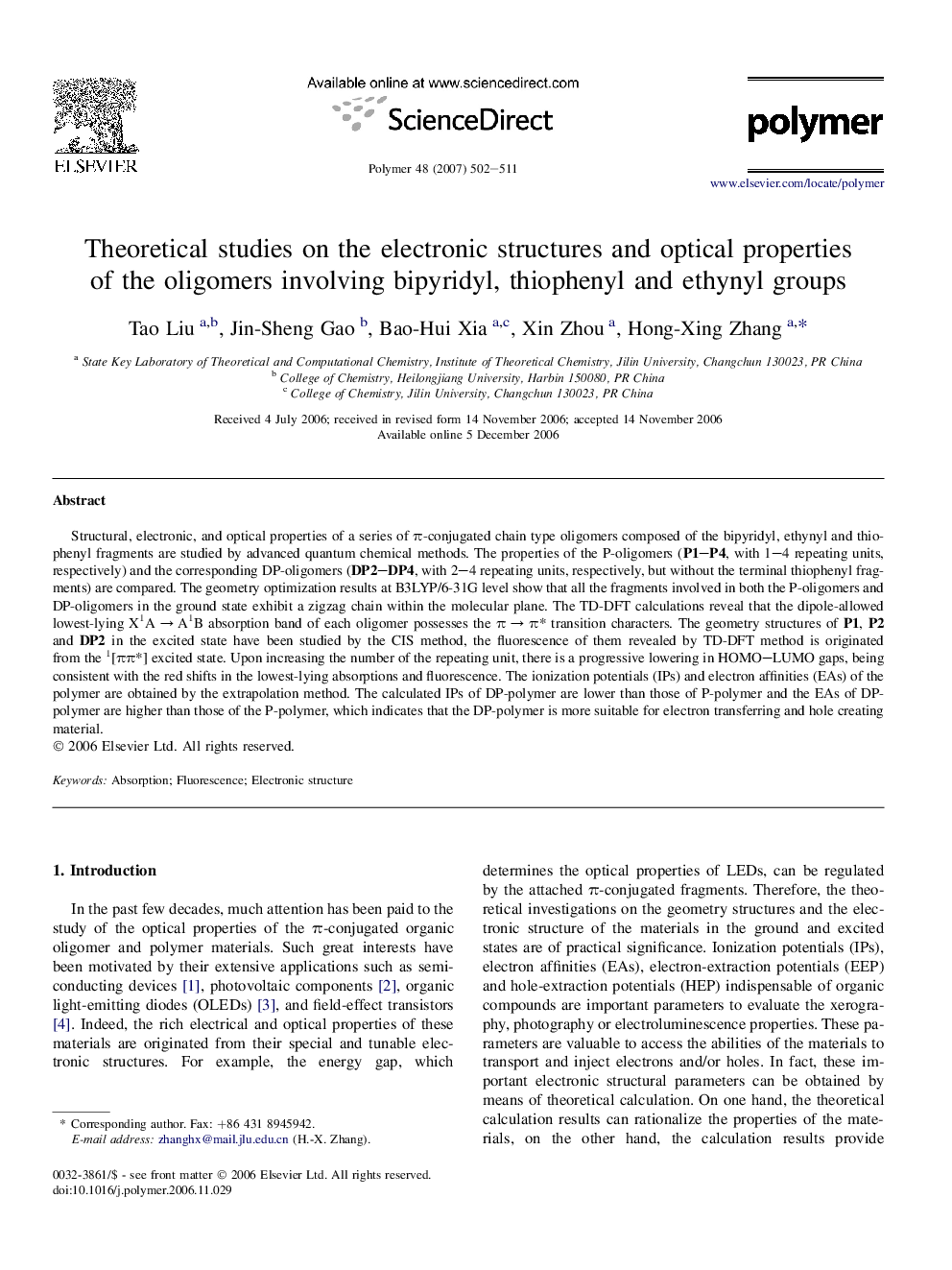| Article ID | Journal | Published Year | Pages | File Type |
|---|---|---|---|---|
| 5186392 | Polymer | 2007 | 10 Pages |
Abstract
Structural, electronic, and optical properties of a series of Ï-conjugated chain type oligomers composed of the bipyridyl, ethynyl and thiophenyl fragments are studied by advanced quantum chemical methods. The properties of the P-oligomers (P1-P4, with 1-4 repeating units, respectively) and the corresponding DP-oligomers (DP2-DP4, with 2-4 repeating units, respectively, but without the terminal thiophenyl fragments) are compared. The geometry optimization results at B3LYP/6-31G level show that all the fragments involved in both the P-oligomers and DP-oligomers in the ground state exhibit a zigzag chain within the molecular plane. The TD-DFT calculations reveal that the dipole-allowed lowest-lying X1A â A1B absorption band of each oligomer possesses the Ï â Ïâ transition characters. The geometry structures of P1, P2 and DP2 in the excited state have been studied by the CIS method, the fluorescence of them revealed by TD-DFT method is originated from the 1[ÏÏâ] excited state. Upon increasing the number of the repeating unit, there is a progressive lowering in HOMO-LUMO gaps, being consistent with the red shifts in the lowest-lying absorptions and fluorescence. The ionization potentials (IPs) and electron affinities (EAs) of the polymer are obtained by the extrapolation method. The calculated IPs of DP-polymer are lower than those of P-polymer and the EAs of DP-polymer are higher than those of the P-polymer, which indicates that the DP-polymer is more suitable for electron transferring and hole creating material.
Related Topics
Physical Sciences and Engineering
Chemistry
Organic Chemistry
Authors
Tao Liu, Jin-Sheng Gao, Bao-Hui Xia, Xin Zhou, Hong-Xing Zhang,
